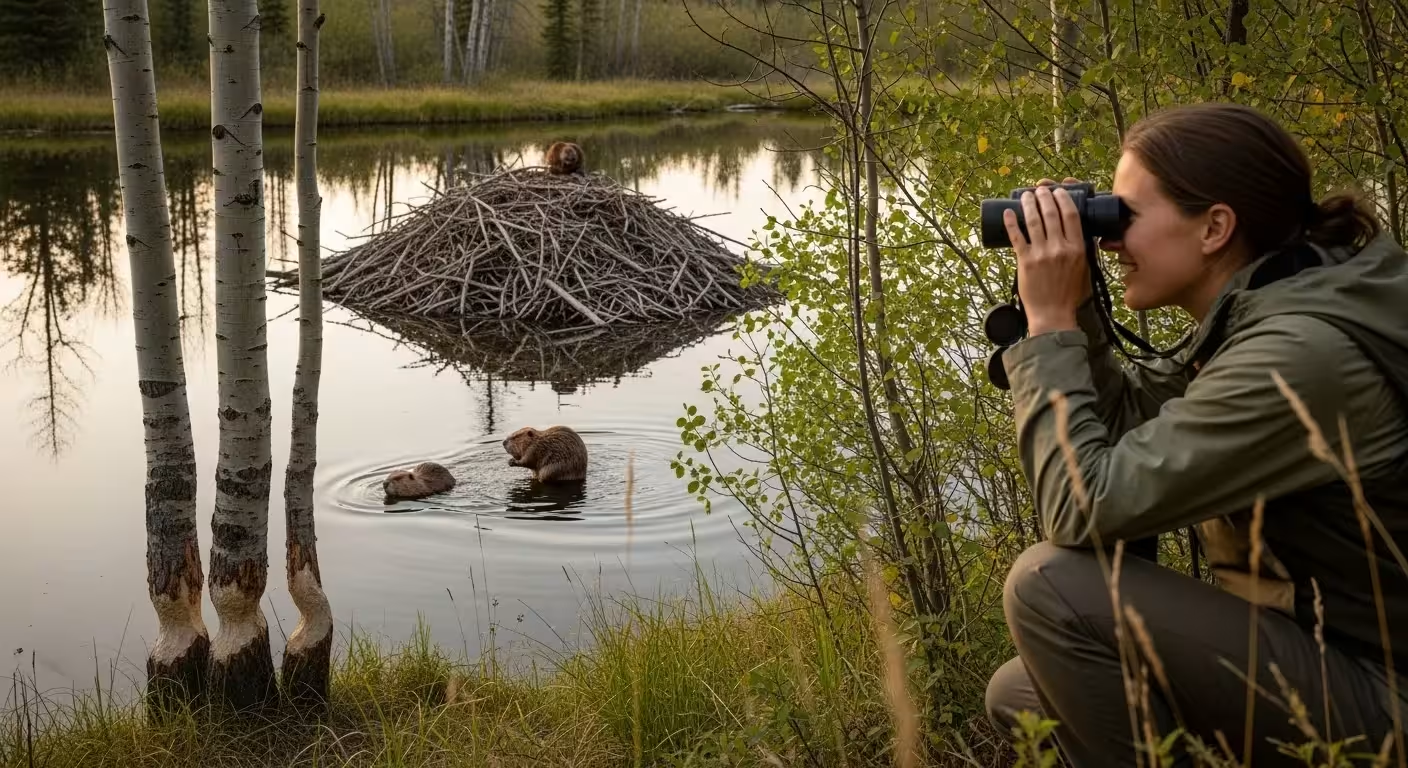
Your Next Steps in Wildlife Observation
The world of the beaver is an accessible and rewarding subject for any nature enthusiast. You don’t need to travel to a remote wilderness to find them; you only need a local stream, a dose of patience, and a respectful approach. Transforming your knowledge into action is the best way to deepen your appreciation for these incredible engineers.
Start with Signs
On your next walk in a park or natural area with a stream or pond, shift your focus. Instead of looking for the animal itself, start by looking for its signs. Can you find a willow stump gnawed to a point? Can you spot a muddy slide entering the water? Identifying these clues is the first step to understanding where beavers live and how they use their habitat. It turns a simple walk into an ecological investigation.
Record Your Sightings
Ethical documentation can contribute to our collective understanding of wildlife. If you are lucky enough to observe beavers, make a note of the date, time, location, and what they were doing. Was it a single beaver or a family? Were they repairing the dam, carrying a branch, or grooming? Sharing these observations on citizen science platforms like iNaturalist can provide valuable data for scientists and land managers, but remember the golden rule: never share the exact location of a sensitive site like a lodge or den.
Learn More
Visit local nature centers, state parks, or wildlife refuges, many of which have programs or interpretive trails focused on beavers and wetlands. Always follow local regulations and posted signage. For more detailed information on beaver ecology and conservation, explore the resources available from federal agencies such as the U.S. Fish & Wildlife Service, which provides comprehensive species profiles and management information.
By engaging with the world of beavers, we do more than just learn about a single species. We learn about hydrology, ecology, and the profound ways in which all living things are connected. The dam is more than a pile of sticks; it is the heart of a vibrant community, built and maintained by nature’s most dedicated engineer.
Disclaimer: This article is for educational purposes only. Always follow local laws and regulations regarding wildlife. Never approach, feed, or handle wild animals. Maintain a safe and respectful distance at all times. In case of a wildlife emergency, contact your local animal control or state wildlife agency.















